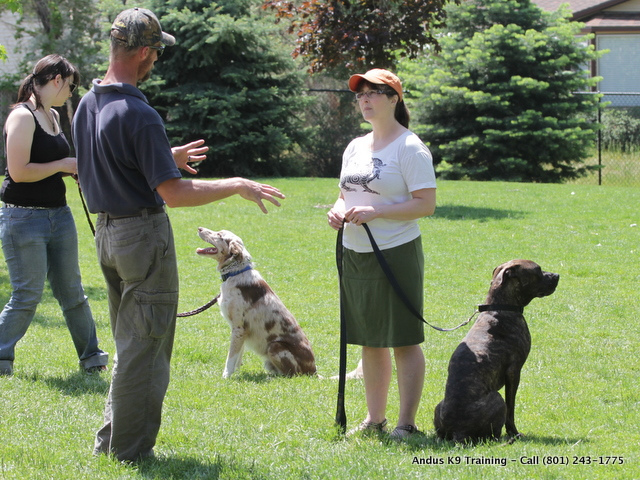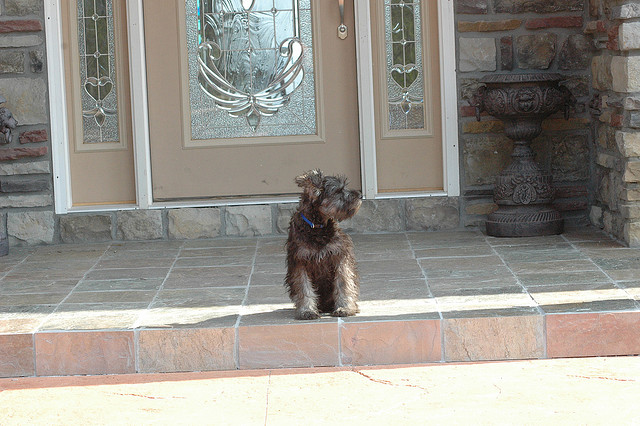Below are 6 of the most common dog questions and there answers from several different, respected vets:
1. Q: My 14 lb. dog growls a lot. For example, if I approach him in the morning while he is sleeping in his bed, he’ll growl. He doesn’t always growl. If I call him to me he’ll stop and I don’t feel any fear, but I am just curious as to what he is saying when he does, after all he is my dog and it’s strange that he would growl at me. A: Dogs growl for a multitude of reasons depending on the situation. A growl is just one method of communication that dogs use. They also use their eyes, ears, tails, body postures and facial expressions to communicate with other dogs and people. A growl is usually perceived as a warning. In this case, your dog may be guarding the bed on which he sleeps. He may be responding “aggressively”, but his underlying reason for growling may be anxiety. Do not attempt any corrective or dominant behaviour techniques when he is in a situation like this; it may only result in further escalation of his “aggressive” behaviour and you may be seriously hurt, as all dogs are capable of biting. I would recommend consulting your veterinarian for a medical work-up to rule-out any underlying problems that could contribute to anxiety, such as pain from arthritis. Rebecca Corrigan, DVM, MSc, CVA works at Acadia Veterinary Clinic in Saskatoon, SK.
2. Q: How can I help my dog become less shy? A: Give the dog as many new social experiences as possible. For example, ride on a bus or walk your dog through busy spots to meet new people and animals. Make sure that the experiences are pleasant and unthreatening. If you meet dominant or wild dogs, always remain calm and friendly while keeping a distance. Never force your dog to come forward when it is scared, but go forward yourself to show that there is no danger. Ignore shy behavior – comforting the dog might be understood as concern on your part- making the dog less secure. Do not react when your dog retreats but always reward good behavior when it socializes well. Some dogs are just inherently shy; it takes time. But with practice, the right cues from you and opportunities to socialize often, your dog will eventually become more comfortable and outgoing in unfamiliar environments. Dr. Anita Bielak, DVM, practices at Pet Vet Clinic in Steinbach, Manitoba.
3. Q: How do I train my two small hyper dogs to walk calmly on the leash? A: The quickest method is to use ‘Gentle Leaders’, which are very effective in calming dogs and preventing them from pulling on lead. If you prefer not to use a head collar, then it is back to basics as there is no quick fix! The dogs need to learn to focus on you and understand what’s expected. Enrolling in a local dog training school/program would be most beneficial. I start my dogs off lead in the house. Before I feed them, I have them follow me while I am holding the food bowl, one dog at a time. Walk holding the food bowl and ensure they know that there are some yummy additions in it! Reward the dog for the right position. As you make progress, try stopping, turning etc. but go SLOWLY. Take your time and let them think about what to do. As long as your pet is CLOSE to being in the right position and paying attention, reward them. Don’t distract them by waving your hands around or talking –remain calm and quiet. As you progress, raise your expectations about their position. Keep rewarding and make it fun! Limit these sessions to two to three minutes at a time, and eventually you will have a dog that walks great on AND off lead! Ellie Ross, owner of Wag and Train Inc., Kitchener, Ont., and CTV’s “PUP Talk” host
4. Q: How can I stop my puppy from jumping and nipping at my kids while they are outside playing? The dog is usually quite far from me and runs away when I approach to correct the behaviour. A: This is completely natural behaviour for a puppy. Life is just a big game to them, but it’s up to us to teach them the rules! We need to instruct them what is acceptable and what is not. As a rule, dogs should never be left alone with children, especially puppies and young children, so one of the easiest ways to get control is to always have your pet on a leash when around your kids. When the adult sees the puppy getting over stimulated they should redirect the puppy’s attention to an appropriate toy. Also teach the puppy to sit and calm down before he gets treats. Another option is to give him a quick time-out by standing still and ignoring the puppy until it stops jumping up. Follow this with a treat or toy and lots of praise. Once you know you can control your dog’s behaviour, even from afar, you can give him more freedom to run and play with the family. Miranda G Bourque is a veterinarian working at Foothills Animal Hospital in Okotoks, Alberta.
5. Q: Our 13-year-old dog constantly chews the bottom of her paw or sucks on blankets and articles of clothing. How can we stop this behaviour? Is it dangerous to her health? A: If this behaviour is new, then I would strongly recommend a thorough examination by your veterinarian. A sudden appearance of sucking and chewing could be indicative of dental problems, intestinal problems, pain from arthritis or other musculo-skeletal problems and even neurological issues. Never dismiss new behaviours, especially in elderly animals; they might be early warning symptoms of something medically serious. However, if she has been doing this all of her life, it’s likely to relieve boredom or stress. How aggressively you approach stopping this behaviour depends on if she has actually damaged her paw. Punishing behaviours that relieve stress only escalate the stress. Distract and stimulate her with treats or toys that engage dogs in problem-solving to get the treat. To relieve stress, a product called a DAP (Dog Appeasement Pheromone) might be in order. You can disperse the calming pheromone from a device that plugs into the wall socket, from a specially designed dog collar or from a spray bottle. Most veterinarians stock these. If she is actually damaging her paw, then she may need a stronger anti-anxiety medication, so have her examined by a vet before taking any action. Jennifer L. Scott, D.V.M., practices at Sundance Animal Hospital in Calgary, Alberta.
6. Q: How do we stop our mixed breed (large) dog from barking and lunging at strangers when he’s on his leash? Is he trying to protect us? A:There are different possibilities, either your dog is afraid of the strangers or is territorial of you, but regardless of the root, there is still a way to modify this unacceptable behavior. But first you need to get your dog under obedience control on the leash when it is just the two of you—doing many “sit- stay” with a head halter and leash practices will help. Then enlist someone you know who is a “stranger” to the dog to help you. The “stranger” needs to walk by for a period of four days (approx 15 feet away) and toss a treat towards the dog without making eye contact. After a few days of this, have the “stranger” dip towards you closer and toss a treat, again no eye contact. Once the dog is good with that and does not lunge, have “the stranger” walk up and give your dog a treat, again NO eye contact and NO reaching out to pat the dog, the stranger must stay neutral. Eventually the dog will equate passing people with positive experiences. By using your voice and visual cues with each food reward, further training can also be undertaken as well. Deena Cooper is a certified animal trainer and owner of Deena Speaks Dog training centre in Toronto, Ontario.
Now it is important to remember that even though these may be common questions the answer might not be exactly what your dog needs. If you try one of the remedies mentioned above and see no changes or anything getting worse, consult a vet right away.
How do you keep your fur baby calm and healthy?
Article Source: Reader’s Digest
Image Source: Maplegirlie on Flickr





Leave a Reply